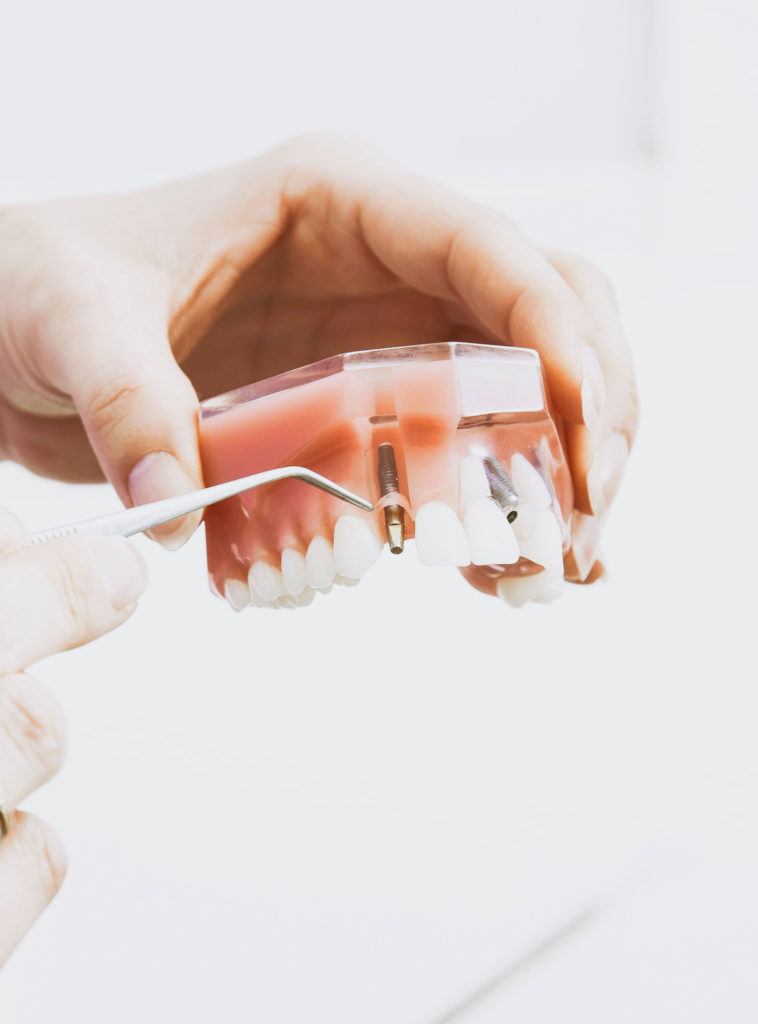IMPLANTOLOGY
The healing period for an implant normally goes from 3 up to 6 months, and it is still considered as the right waiting time to have a correct osseointegration. Early loaded implants – with a shorter waiting time than the one indicated above – can be used in some selected cases if there are the correct clinical prerequisites and if the bone proved to be suitable during the surgical phase. In order to do this, objective systems should be used to verify the implant’s stability (resonance frequency), to have a more scientific approach and more respect for the patient.
Post-extraction implantology
It consists of inserting an implant immediately after the extraction of the tooth and not after the traditional waiting time for healing; this is currently a widely studied and predictable surgical technique, but as usual it has to be carefully considered by the operator.
This technique usually refers to teeth with just one or two roots, while it is almost always contraindicated for implants that replace molars. The post-extraction implants favour the maintenance of the soft tissue profile and of the volumes of the bone crest (which is subject to resorption following dental extraction) and at the same time they reduce the overall duration of the treatment plan that is proposed to the patient.
Several studies have shown that the success rate of this type of intervention is comparable to the one of traditional implantology (with insertion of the implant in a healed bone site).
The advantages offered by this surgical technique are basically two:
1. It avoids the second intervention to insert the implant in the healed bone site after the extraction (2 – 4 months later);
2. It reduces the time between tooth extraction and the prosthetic intervention, decreasing the edentulous period and the total time needed to treat the patient.


Immediate load implants
The implant is loaded immediately after the insertion with a temporary tooth. This is possible only when the missing element is not the last tooth, but one interposed between the other teeth, in order to reduce the chewing load. The operator will have to eliminate any contact between this temporary element with the nearby and opposite teeth.
“All-in-four” implantology
With the help of radiological assessment softwares, the doctor can plan in advance the entire intervention, identifying with extreme precision the most effective position for the insertion of the implants in the bone. For fully edentulous patients the specific care technique is the all-in-four. This intervention is usually performed without a surgical flap. This technique, which is surely innovative and very modern, has the flaw of being much more expensive than other similar interventions and of strongly depending on the design precision. In case of erroneous assessments, in fact, the risk of failure is much higher.
OPENING HOURS
- Lunedì :9.00 - 19.00
- Martedì :9.00 - 19.00
- Mercoledì :9.00 - 19.00
- Giovedì :9.00 - 19.00
- Venerdì :9.00 - 19.00
BOOK A CONSULTATION
